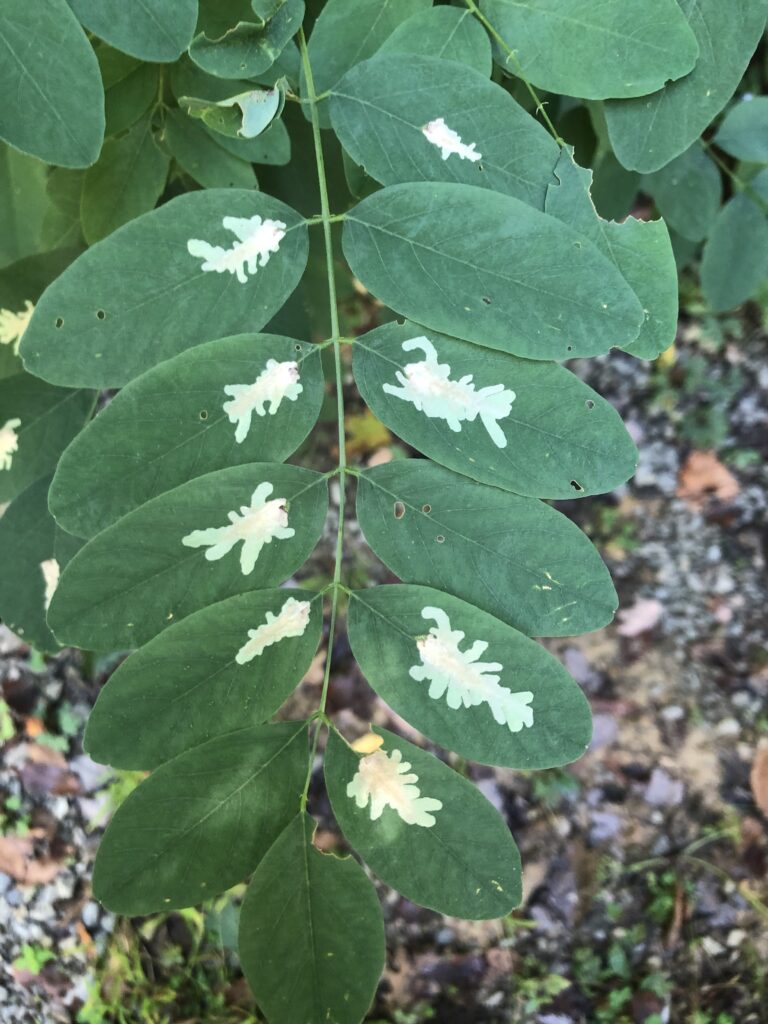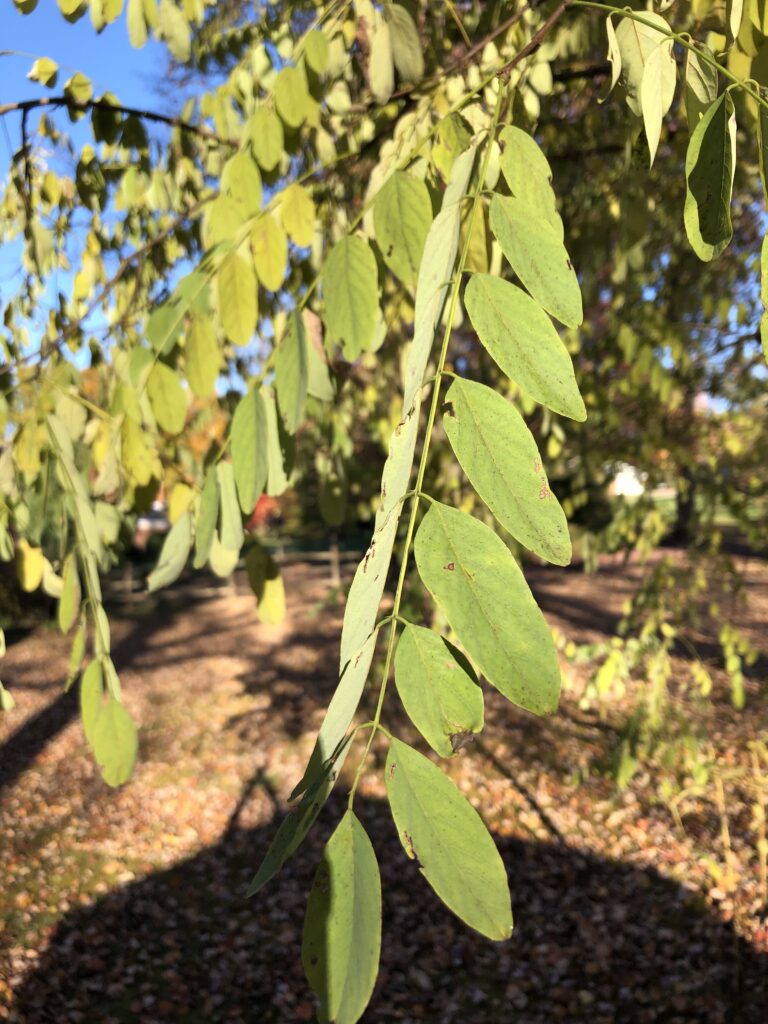Outbreaks of pest insects usually attract people’s attention, and often they ask why
a given blight “is so bad this year,” calling for an ecological explanation. For most insects, we usually don’t even have good data for predicting population sizes for regular years, let alone boom years. Sometimes we can make a good guess that a certain combination of events that we noted as unusual, perhaps a very mild winter followed by a dry spring, might have something to do with the boom of a given species. Most other years the species does less well because on average there is a harder winter and wetter spring. With lower numbers, the pest does not attract much attention, even though it is still out there doing its thing as a pest.

Locust tree leaves are heavily attacked by various insects. Here are blotches caused by a larvae that mines the tissue inside the leaf, and in upper right a leaf shows damage from a caterpillar or beetle eating the margin.
What people rarely notice is that a given pest insect has not made much of an appearance this year. Perhaps it is that people notice things they don’t like more than they notice that nothing is bothering them. But those of us who are accustomed to feeling the pulse of nature do notice when a given insect is not filling its usual role, even if it is a pest. So it is with the locust trees this year. Locusts have leaves that have little defense against herbivores and by late July the leaves are usually showing signs of damage that leads to early drop-off, as with the leaves in the image above, damaged by leaf miners.

As stated in an earlier blog on the economics of production and defense of locust leaves, usually by August locusts look pretty ragged. But this year, none of several pest insects have affected a large area of the Laurel Highlands, and the leaves are green and whole as late as the end of October and early November. Because I watch locusts in particular, I am curious as to where all the locust insects have gone this year. It is a good year for locusts, and I have no explanation.
Of course, we never defined “pest” and in that regard, the designation is entirely subjective. A cherry tree finds the tent caterpillar is a pest. Yet, the cuckoo birds that specialize on hairy caterpillars see the pest as a resource! A few years ago, tent caterpillars were very rare, so a good year for cherries and a bad year for cuckoos. Such is the difficulty of ecological definitions, and explanations.

The black and yellow beetle near the bottom of the photo is a longhorned locust beetle, Megacyllene robiniae that bores into the trunks of locust trees, causing sometimes serious damage. There was no shortage of them this year. This one is feeding on pollen on a goldenrod in late October. The other insects in the photo are common Polistes paper wasps, males have a yellow face.

